
Hey, guys! Today, we’re going to learn (How To Grow Rose Plant:) the techniques of rose plants cultivation in your own pot. You can introduce the beautiful scent of roses and colorful roses in your space with just a sunny spot and the right care. Let’s check out the easy ways to grow rose plants!
Table of Contents
- Introduction to Growing Roses
- Watering Techniques for Roses
- Managing Transplant Shock
- Long-Term Care for Your Roses
- Conclusion and Encouragement
- FAQ: Common Questions About Growing Roses
- Explore More Gardening Guides
Introduction to Growing Roses
You like to do roses as they are among the most rewarding plants to grow. Roses are the flowers that make your garden beautiful with their bright colors and attractive smells. But first, you need to have a comprehensive understanding of the rose plant. It is essential to find out the appropriate environment, care, and tools for the plants to be cultivated properly.
Before we start, I would like to remind you that growing roses is more than just putting them in the soil. It is, in fact, a journey of faith, learning, and a little bit of knowledge about care. Discovering the main steps to properly grow your own rose plants is the first thing we are going to do together.
How To Grow Rose Plant: Choosing the Right Pot
The first step in growing roses in pots is selecting the right container. A pot with good drainage is essential. Without it, your roses could suffer from root rot. Aim for a pot that’s at least 12 inches in diameter to allow for proper root growth.
Consider using terracotta pots, which are breathable and help regulate moisture. Always ensure there are drainage holes at the bottom. If your pot doesn’t have them, you can create your own or select a different pot.
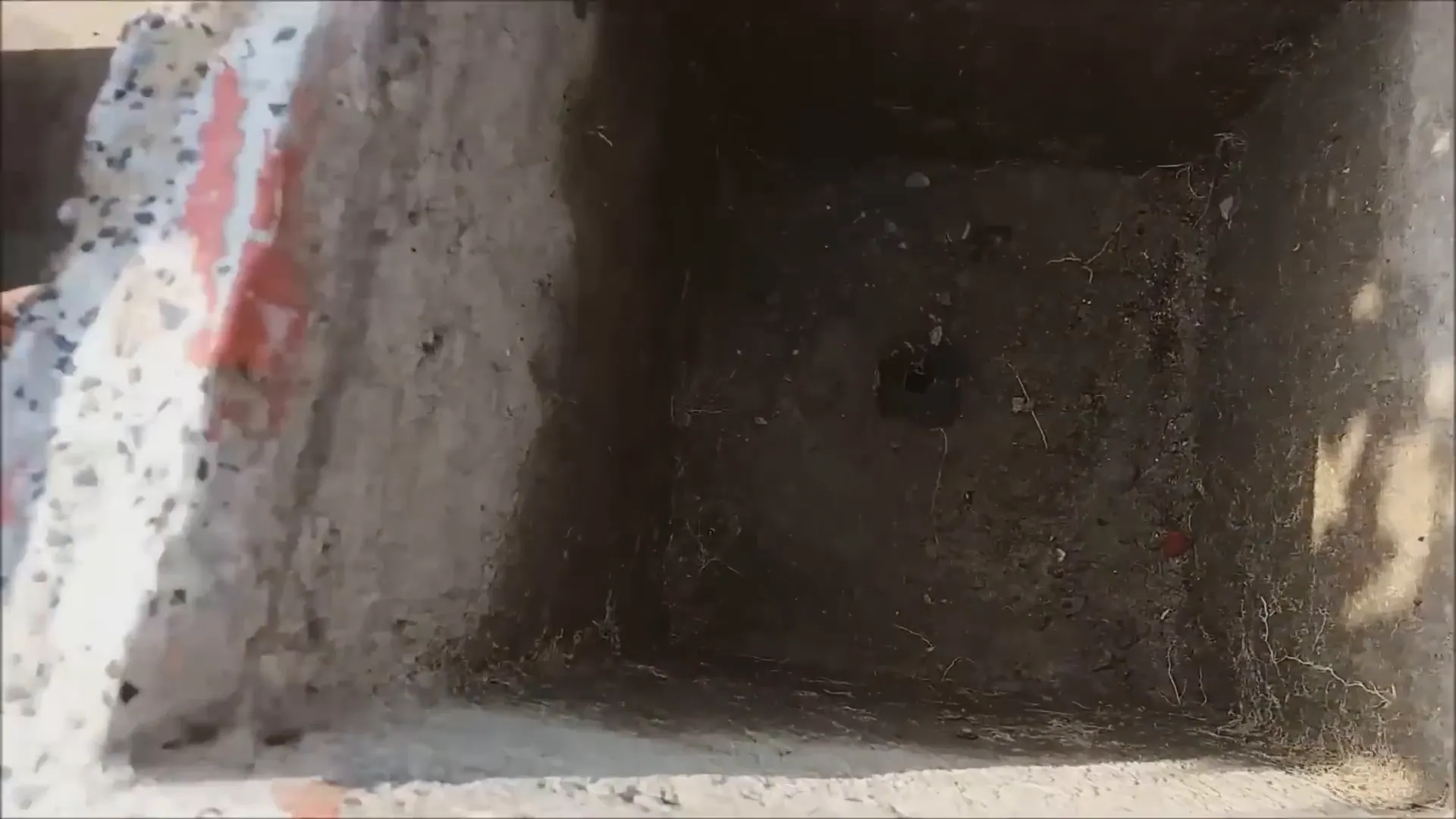
Preparing the Soil Mix
Soil preparation is a critical step when growing roses. A well-draining soil mix will provide the necessary nutrients and aeration for healthy root development. You can start with a quality potting mix and then enhance it by adding organic matter.
Blending in compost, which is full of nutrient will amend the soil. Furthermore, perlite or vermiculite incorporation can help the drainage. This combination is what you need to create a perfect site for the growing of your rose plants.
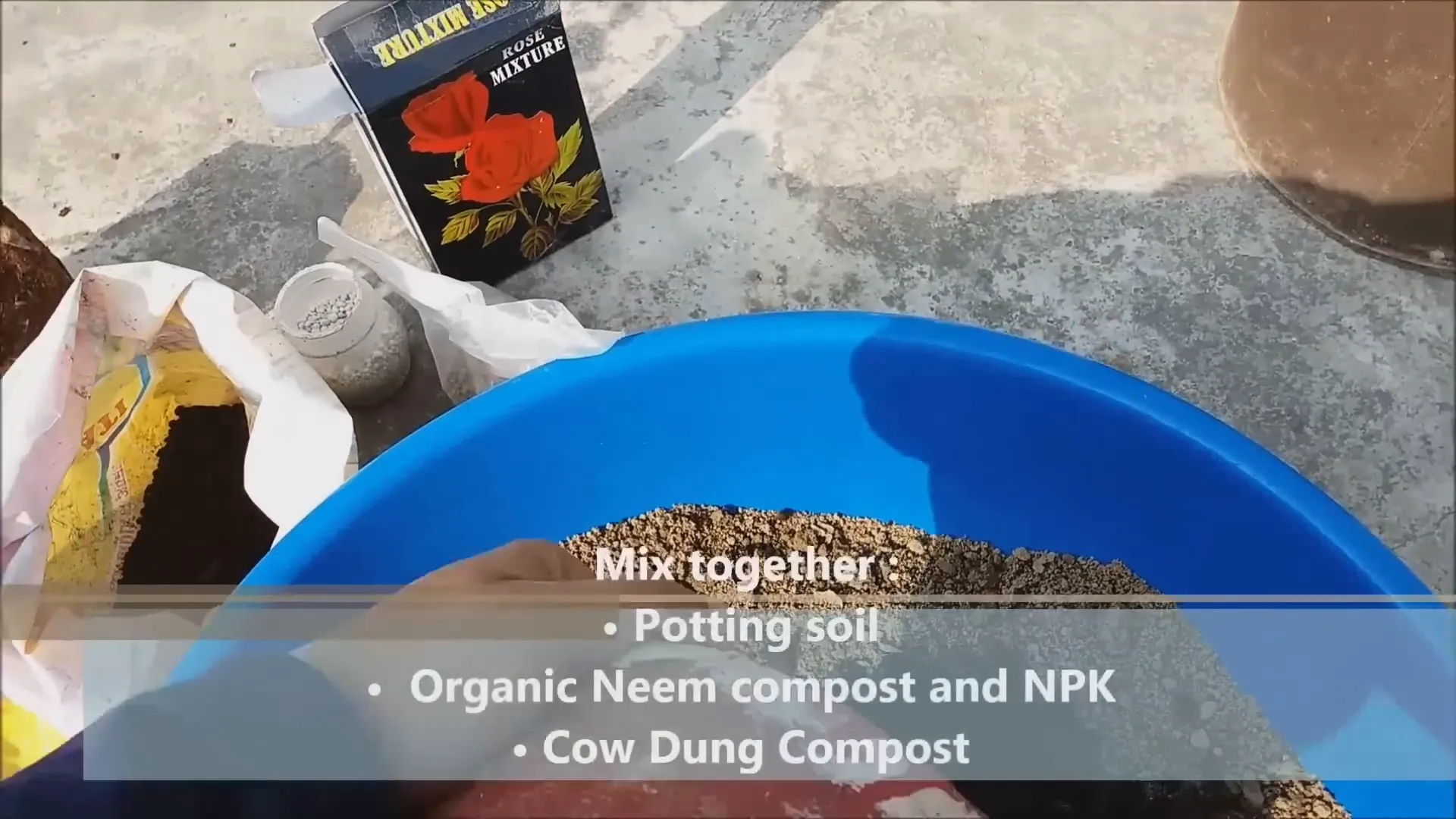
Adding Nutrients: The Importance of NPK
Nutrients play a vital role in the growth of your roses. The NPK ratio, which stands for nitrogen, phosphorus, and potassium, is critical. Each of these nutrients serves a unique purpose. Nitrogen promotes healthy foliage, phosphorus supports root and flower development, and potassium enhances overall plant vigor.
When picking a fertilizer, it is advisable to choose a specific rose fertilizer. Be sure to obey the guidelines strictly. Otherwise, the excess nutrients could damage the flora. A correct balance will be a great assistant in your rose gardening.
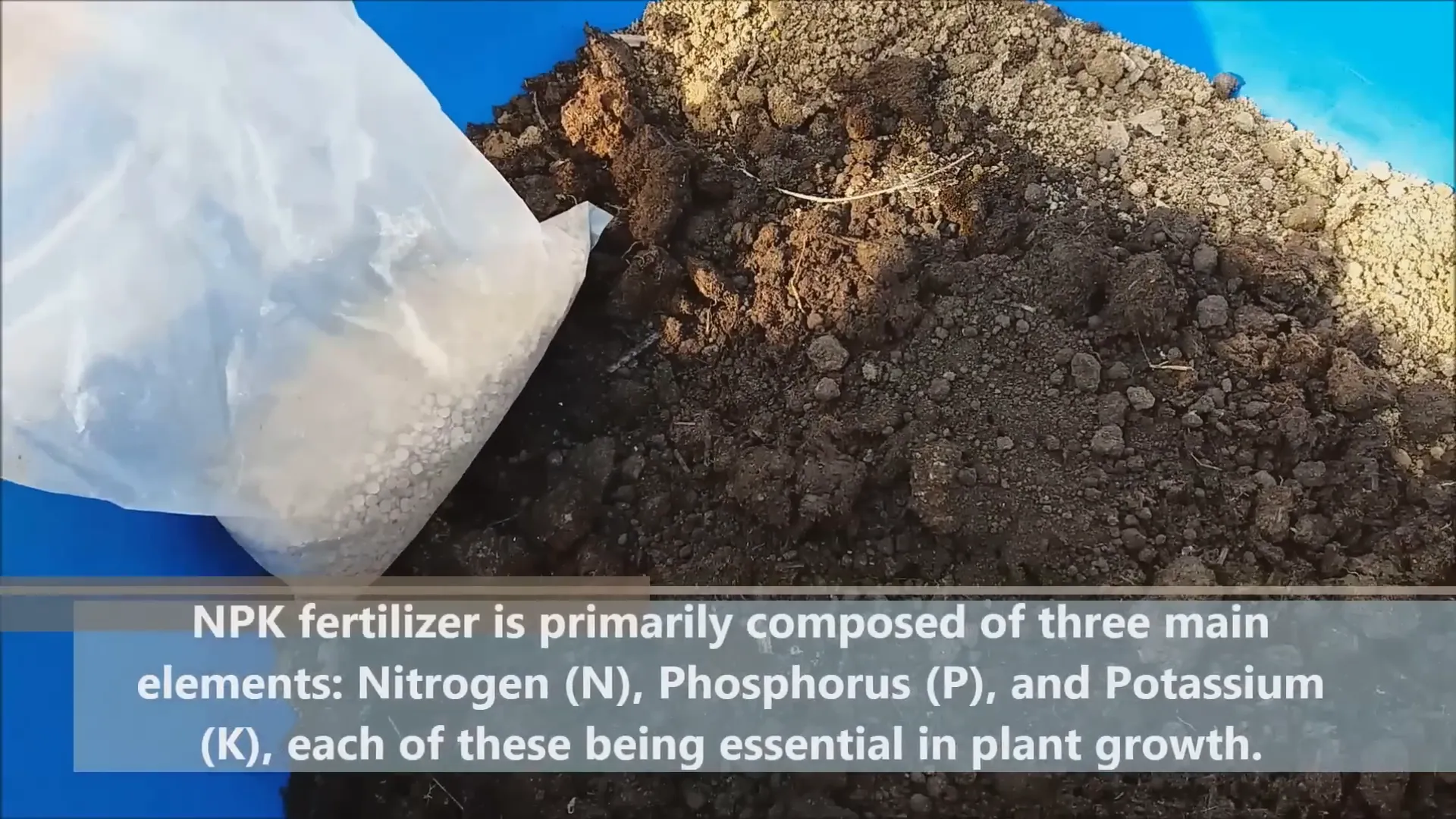
Selecting the Perfect Rose Variety
The choice of the correct hybrid rose variety is always a decisive factor. There is an infinite number of different types, each possessing a special quality that sets it apart. For instance, hybrid teas, floribundas, and climbing roses are some of the well-known options. When picking a variety, you should think about your climatic zone, the surface area you have, and the type of view you wish to generate.
Hybrid tea roses are the starters’ favorites because of their sturdy nature and beautiful flowers. Violent is heirloom varieties that not only are rare but the most fragrant ones to consider. Inquire and choose the right types for success.
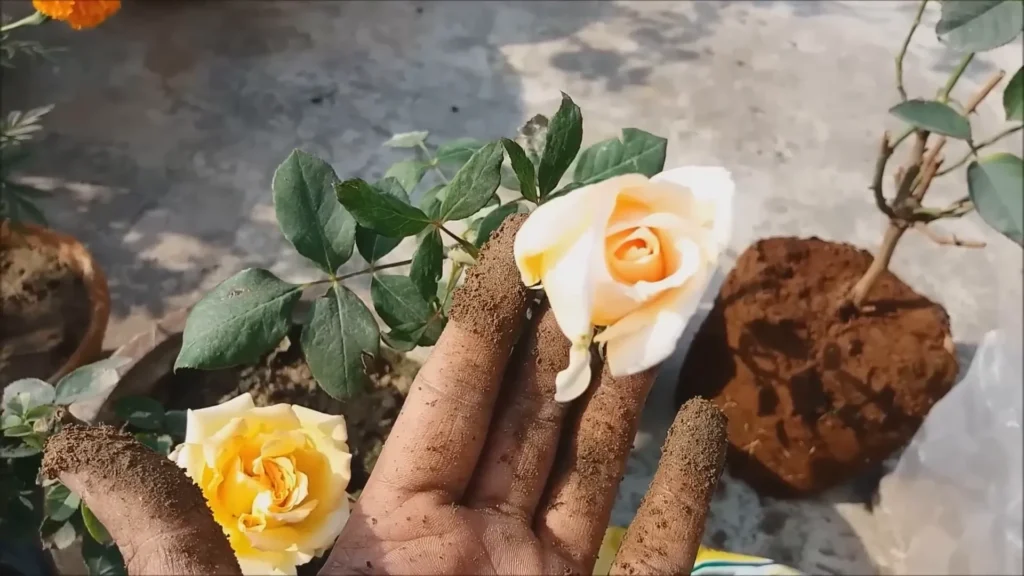
Transplanting Your Rose
Once the transplanting rose is prepared, the first thing you should do is to treat it with care. First, you should gently detach it from its original pot, being careful not to harm the roots. If the roots are tied up badly, you should lightly loosen them to help root into new soil faster.
Make the rose the centerpiece of the new pot by placing it right in the middle and then fill it up using your pre-prepared soil mix. Top space is to be left for watering purposes. A good watering after transplanting will assist the soil to settle and expel air pockets.

Hanging your rose in a shaded area for a few days is pronouncedly recommended right after you transplant it. It is very helpful for the plant to recover from the transplant shock that it has been subjected to and be the way it should, that is in the new environmental conditions without any added stress.
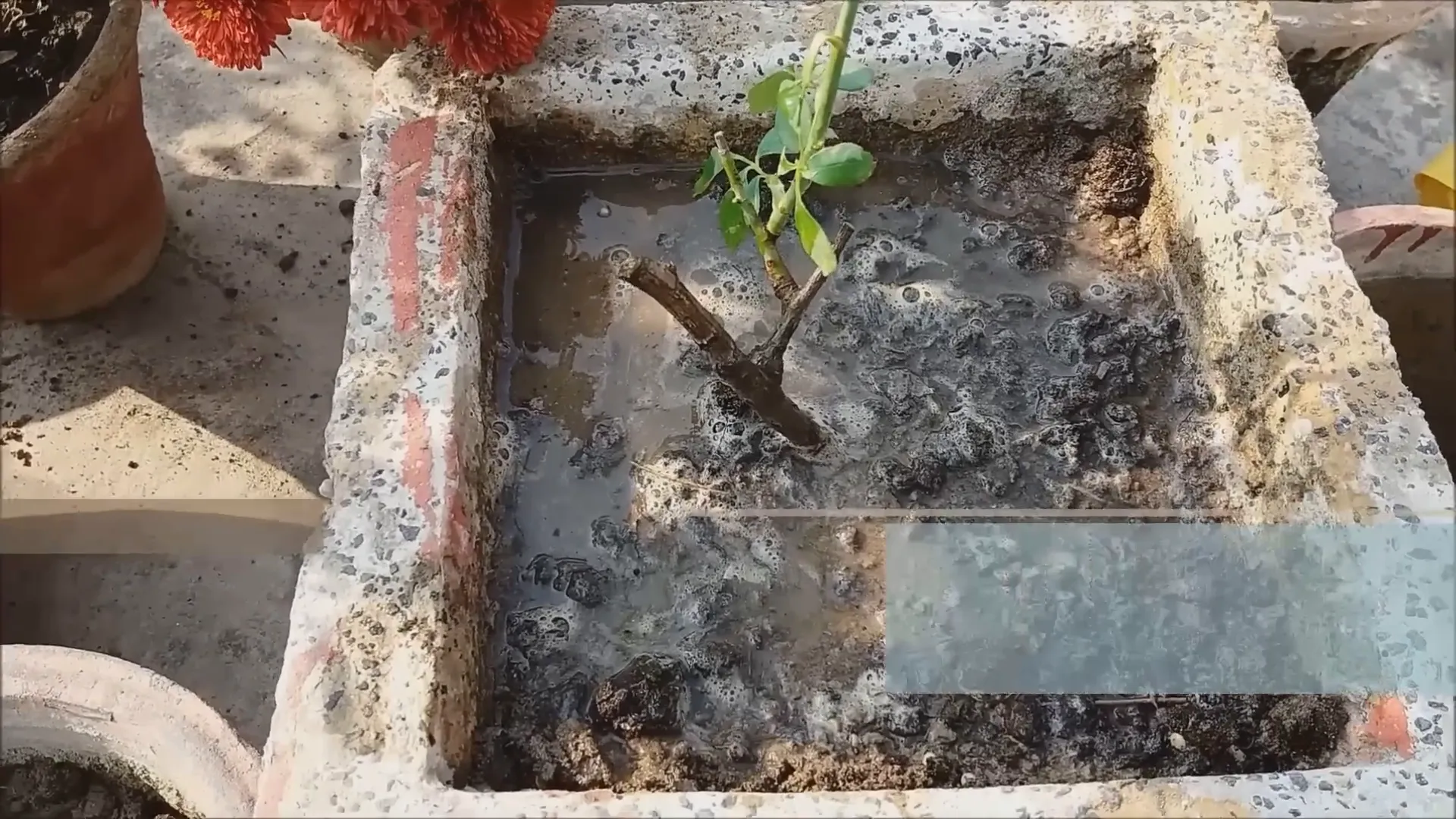
Watering Techniques for Roses
Watering is one of the most important factors for the health of your rose plants. Precise watering can help you provide the right amount of moisture to your roses without making them waterlogged. Here are some simple and efficient the utility of the given site for distributing knowledge on elderly and disabled care The provided knowledge site for caring of elderly and disabled has been evaluated. techniques for keeping your roses healthy.
Watering Frequency
Roses are typical deep-water plants that need to be watered every week. But, this could change with the weather conditions. On hot summer days, the watering of the roses may be more frequent.
You should touch the soil with your finger at a depth of about an inch to check the moisture content. If it feels dry, it’s already the right time to water it.
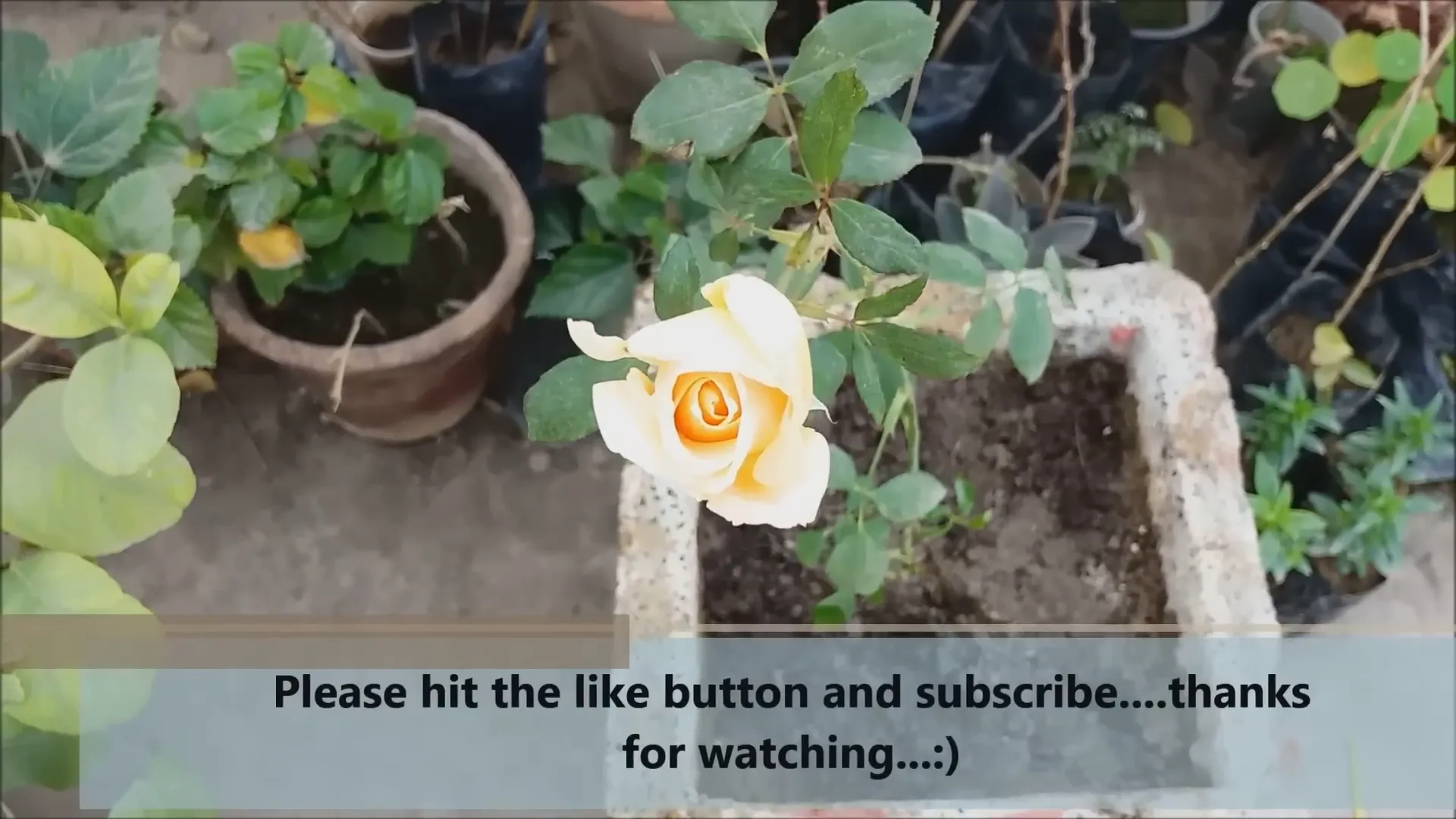
Watering Method
- Base Watering: Always water at the base of the plant rather than from above. This prevents water from sitting on the leaves, which can lead to fungal diseases.
- Soaker Hoses: Consider using soaker hoses or drip irrigation. These methods deliver water directly to the roots, ensuring efficient moisture absorption.
- Morning Watering: Water your roses in the morning. This allows any excess moisture on the leaves to evaporate during the day, reducing the risk of disease.
Managing Transplant Shock
When you are shifting your roses to a new pot or location, transplant shock can be a very big worry for you. It becomes imperative to handle this phase effectively to make your roses re-prosper.
Signs of Transplant Shock
Search for the weak indications like curling, yellow, or retarded leaves. They tell us that your plant has challenges in adapting. Follow this procedure to assist your roses to get well.
Recovery Techniques
- Shade: Keep your roses in a shaded area for a few days after transplanting. This reduces stress and allows them to acclimate.
- Proper Watering: Ensure consistent moisture without overwatering. Monitor the soil and adjust your watering schedule accordingly.
- Fertilization: Avoid fertilizing immediately after transplanting. Wait a few weeks until the plant shows signs of recovery.
Long-Term Care for Your Roses
The long-term management of your roses largely determines whether they remain healthy and good-looking. In this regard, the following are the most vital suggestions.
Regular Pruning
Trimming is the way of molding your rose bushes and it is also the best way to stimulate the creation of new buds. Schedule the trimming process early in the spring when new growth is about to start. You should cut off the dead or infected branches and add more space between crowded branches to let air circulation improve.
Pest and Disease Management
Regularly inspect your roses for pests such as aphids or spider mites. Use organic insecticides or neem oil as needed. Additionally, keep an eye out for diseases like black spot or powdery mildew and treat them promptly.
Fertilization Schedule
Every 4-6 weeks, you should add a balanced fertilizer to your roses and make sure you do this only during the growing season. This is the way to obtain healthy and abundant blooms and to show vigorous growth. For the case that you want to avoid over-fertilization, you need to stick to the prescribed dosage.
Conclusion and Encouragement
Cultivating roses offers a blossoming experience. Through devotion, attention to detail, and the application of proper methods, blooming roses can be in your yard. Every rose plant is different, so remember to refer and take care of the particular needs it has.
Setbacks shouldn’t be a discouragement for you. You are not the only one to face challenges as a gardener. Try creative ways and continue your learning process, in a while, you will be doing amazing rose gardening!
FAQ: Common Questions About Growing Roses
1. How often should I water my roses?
It is usually enough to apply deep watering once a week, but you need to make the necessary adjustments depending on the weather conditions.
2. What is the best fertilizer for roses?
Use rose-specific fertilizers that are usually characterized by a balanced NPK ratio.
3. When should I prune my roses?
The most effective way is to prune in early spring before the initiation of new growth.
4. How can I prevent pests on my roses?
The effective management of pests can be done by routine checks and using bio-pesticides.
5. Can I grow roses in pots?
Definitely! It is only important if your pots have enough drainage and you use the right soil mix for it.
For more gardening tips, check out our guides on growing dragon fruit, growing chillies, and growing strawberries from seed.
Explore More Gardening Guides
In case you wish to add to your gardening knowledge, it is advisable to go through other exhaustive guides of ours:
- How to Grow Tomatoes: A Beginner’s Guide – Learn the essential steps for cultivating tomatoes, from seed selection to plant care.
- How to Grow Dragon Fruit – Discover techniques for growing this exotic fruit successfully.
- Grow Herbs for Beginners – A detailed guide for cultivating your own herbs at home.
- How to Grow the World’s Hottest Pepper – Tips and tricks for growing the Carolina Reaper.
- How to Grow Bell Peppers – Easy steps for growing colorful and nutritious bell peppers.
Visit Vidz ni Rye for more insights into the mental health benefits of gardening and how it can be a sanctuary for stress relief.

